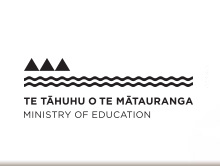Hei Tīmatanga (wh. 3)
He whakarāpopototanga
He whakamāramatanga poto tēnei e whakaingoatia ana ngā wāhi i tau ai te manu aute a Rāhiri. Ka whakahuatia ngā iwi o te takiwā nei.
Summary
This is a brief overview identifying the places where the kite belonging to Rāhiri landed. The iwi of this region are named.
| Te momo reo tuhi Language style |
|
|---|---|
| Ētahi āhuatanga o tēnei momo reo tuhi Features of this language style |
|
I te Ākonga e Pānui ana i te Pukapuka
During Reading
He Ngohe
Anei ētahi whakaaro mō ētahi ngohe e hāngai ana ki ngā kōrero katoa o roto o Whakawhiti 33, Tūhoronuku. Ka taea e te pouako ēnei te whakamahi kia tutuki ai ngā whāinga whakaako me ngā whāinga ako. Ka taea anō e ia te rāwekeweke ēnei whakaaro kia hāngai ake ki ngā whāinga ako me ngā hiahia o ngā ākonga.
Learning Activities
Here are some ideas for learning activities aligned with the writing in Whakawhiti 33, Tūhoronuku. Pouako can use these to help achieve their teaching and learning objectives. These ideas can be adapted to align with the learning objectives and needs of the students.
1. Mā ngā ākonga e tohu ngā wāhi i tau ai te manu aute ki te mahere whenua, kia mārama ai te takiwā e kōrerotia nei e te kaituhi.
Students identify the places where the kite landed on the map, to better understand the region described by the writer.
2. Mā ngā ākonga e tautohu ngā iwi i whakahuatia. Me whakarārangi e ngā ākonga ngā ingoa o aua iwi rā.
Students identify the tribes which are named. Students can make a list of those iwi.



